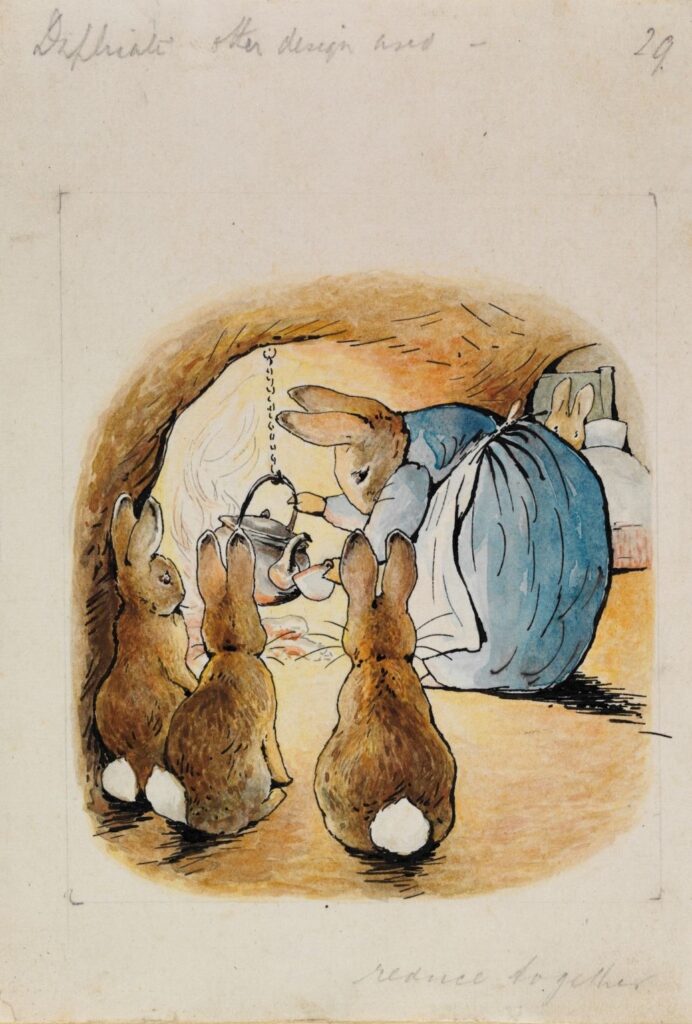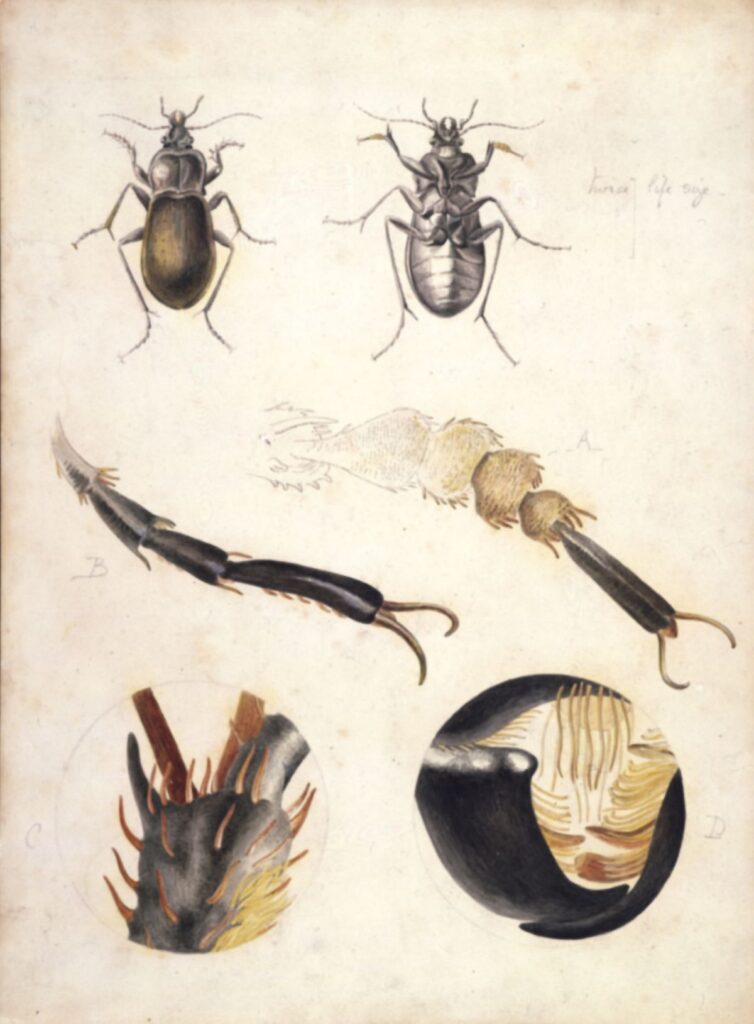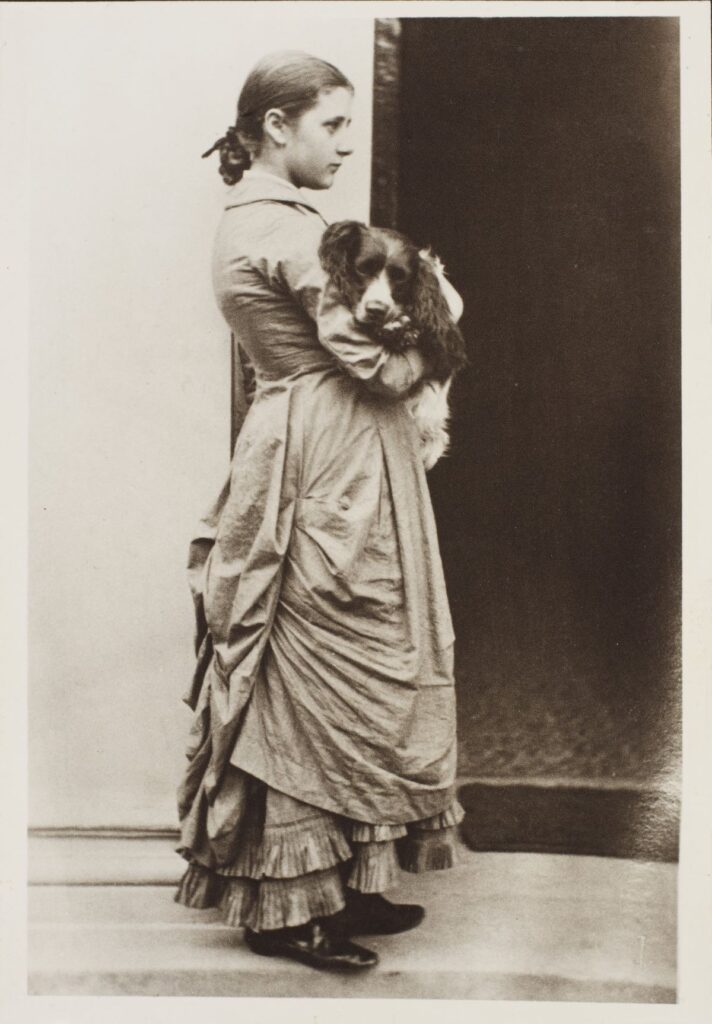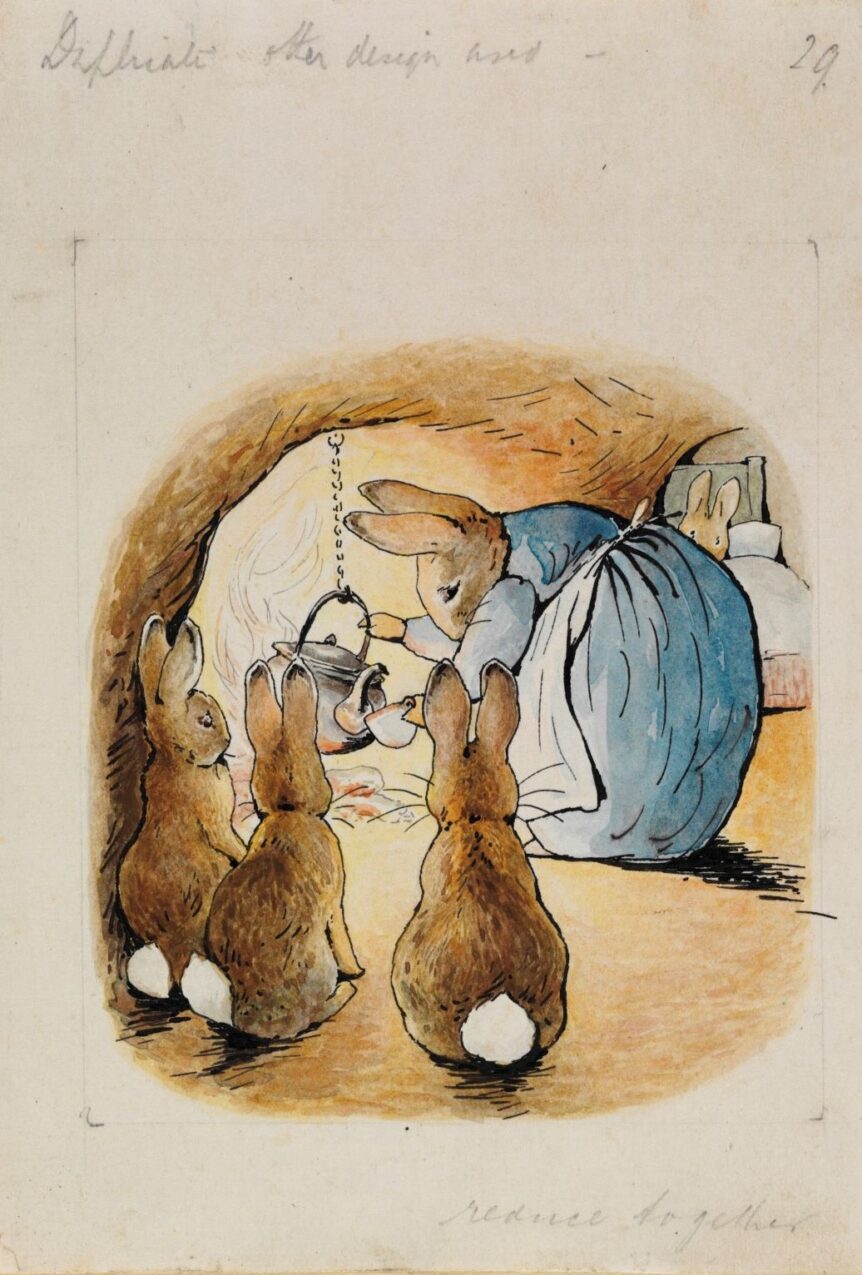

Toward the end of the Victorian era, in what’s known as the “golden age of children’s literature,” the world was introduced to one of the most famous tales of the genre. Generations of children have heard the story of Peter Rabbit, a curious bunny who, against his mother’s wishes, frolics in the garden of notorious rabbit-nemesis Mr. McGregor. The Tale of Peter Rabbit was followed by twenty-two more children’s books, all featuring creatures native to northern England, the chosen home of author Beatrix Potter.
The exhibition Beatrix Potter: Drawn to Nature—organized by the Victoria and Albert Museum and on view this fall at the High Museum of Art in Atlanta—pays homage to Potter’s deep regard for the English countryside and its denizens. Potter’s stories are based on her observations of the animals that shared her garden, and through sketches, watercolors, collected objects, and drawings, the exhibition reveals a life devoted to studying and recording nature. At her death, Potter left her entire estate in the Lake District, including fourteen working farms and thousands of acres, under the protection of Britain’s National Trust.

Rupert Potter (1832–1914), c. 1881.
Potter’s fascination with nature might have led her to a career in science. Encouraged from a young age in her intellectual pursuits, she became a capable mycologist—an expert on mushrooms and other fungi—and was admired for her closely observed scientific illustrations of the organisms. In 1897 she submitted a paper on spore germination to the Linnean Society, London’s preeminent association of natural scientists, to which she was ineligible for membership due to her gender. The paper was treated respectfully but returned for rewriting, and Potter later withdrew it. The genesis of Potter’s literary career was in illustrated letters that she wrote in the 1890s to the children of a friend. Peter Rabbit was born in one of these letters, and Potter’s friend encouraged her to shape his story into a book. Though initially rejected, her manuscript and drawings were published in 1902 to immediate acclaim. The tales of Squirrel Nutkin, Jemima Puddle-Duck, and others soon followed.
Potter’s picture-book illustrations and her scientific work are displayed and celebrated together in Drawn to Nature, which presents the complete story of a scientist and artist whose activism and imagination paid homage to the flora and fauna of what is today one of the most treasured wild areas in England. “Beatrix Potter’s singularly creative life offers insights for all ages,” says exhibition curator Andrew Westover, director of education at the High Museum. Potter’s works have instilled a love of nature in young readers for more than a hundred years through her charming, anthropomorphized illustrations: bunnies in their burrow pouring a kettle of tea; a duck wearing a bonnet and cloak; a house mouse in house shoes. This is how Potter wanted us to perceive the natural world: enchanting, approachable, and deserving of our compassion and protection.
Beatrix Potter: Drawn to Nature • High Museum of Art, Atlanta • October 13 to January 7, 2024• high.org

